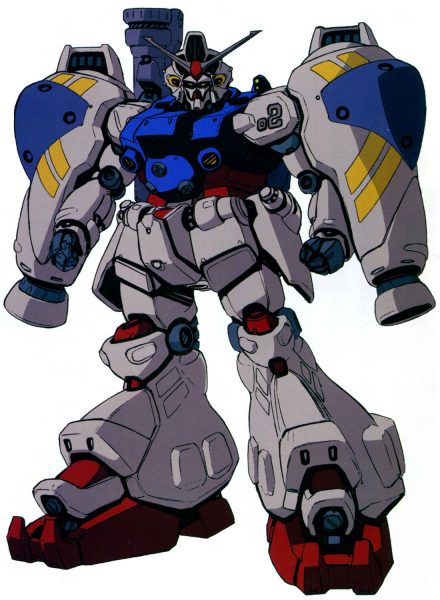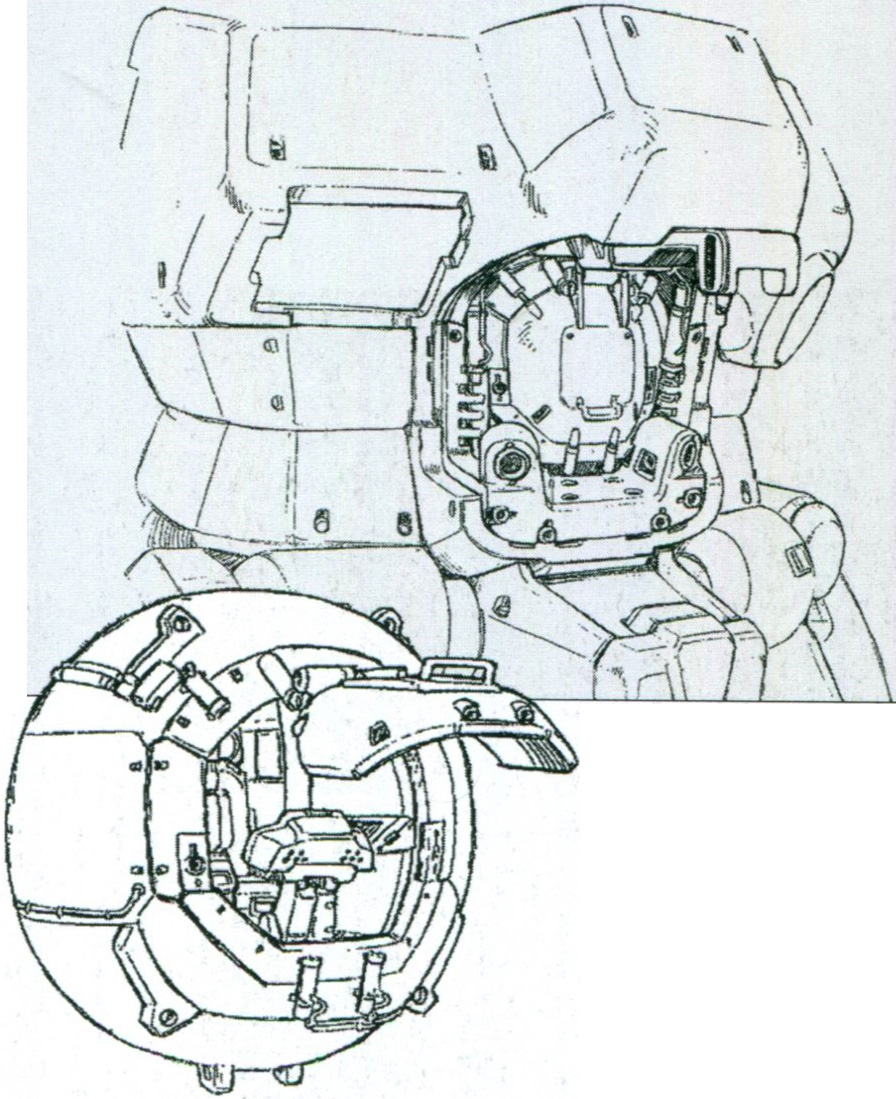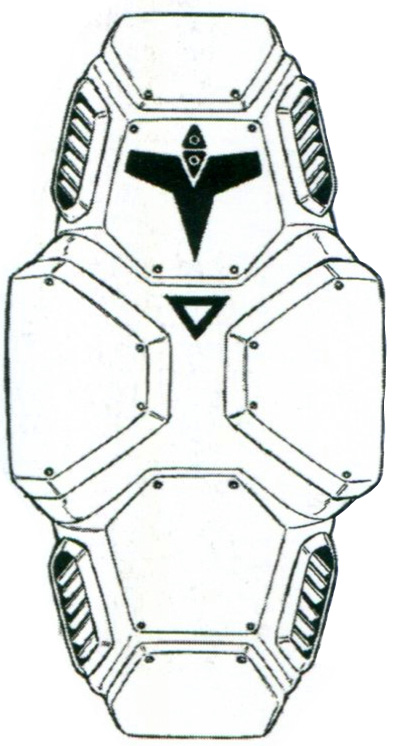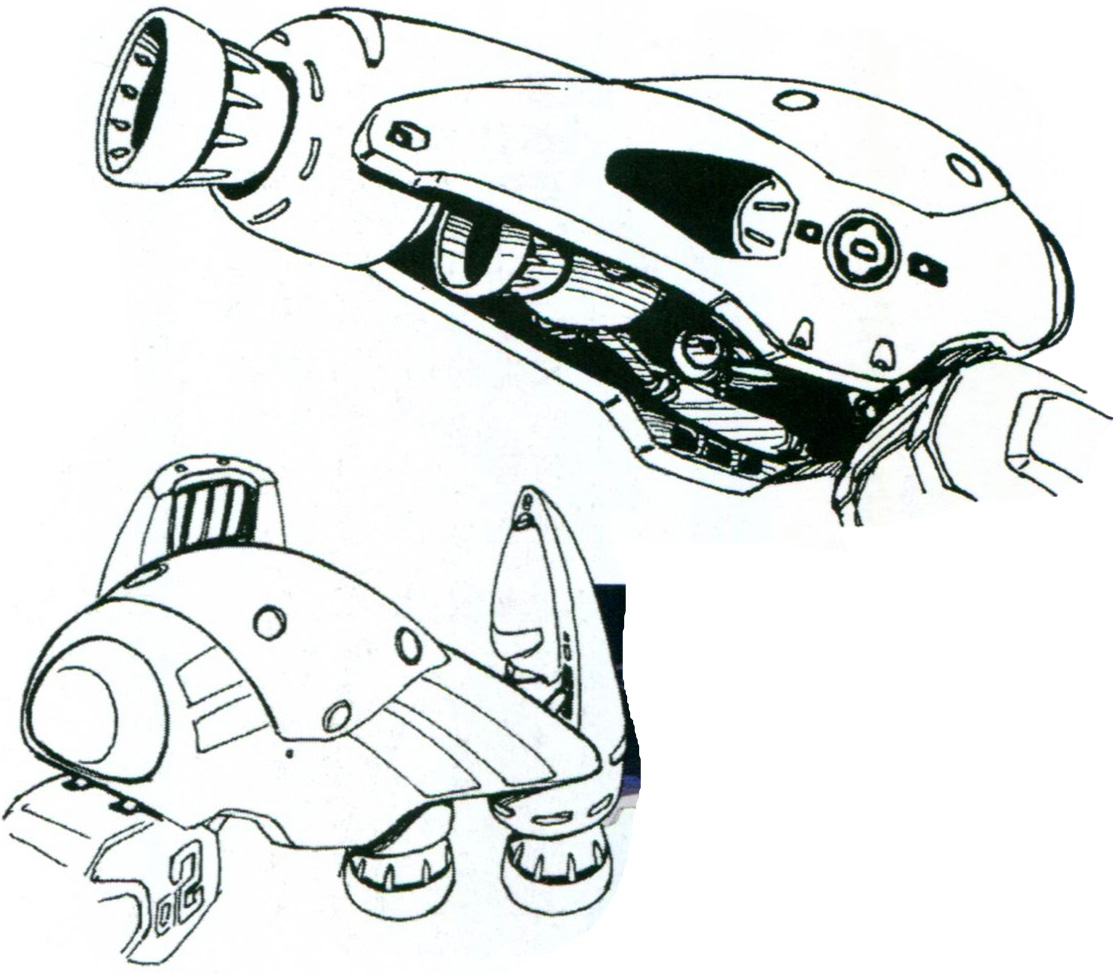Model number: RX-78GP02A
Code name: Gundam GP02A Physalis
Unit type: prototype general purpose tactical mobile suit
Manufacturer: Anaheim Electronics
Operator(s): Earth Federation Forces, Zeon remnants
Rollout: 18 UC September 0083
First deployment: 13 October UC 0083
Accommodation: pilot only, in standard cockpit in torso
Dimensions: head height 18.5 meters
Weight: empty 54.5 metric tons; max gross 83.0 metric tons
Armor materials: Luna Titanium alloy
Powerplant: Minovsky type ultracompact fusion reactor, output rated at 1,860 kW
Propulsion: rocket thrusters: 155,200 kg total (4 x 32,000 kg, 4 x 6,800 kg)
Performance: 180-degree turn time 0.9 seconds
Equipment and design features: sensors, range unknown
Fixed armaments: 2 x 60mm vulcan gun, mounted in head; 2 x beam saber, stored in recharge racks in hip armor, hand-carried in use; atomic bazooka (uses Mark-82 nuclear warhead, 1 round in chamber, breech and firing chamber), mounted on right shoulder, barrel/trigger mechanism stored in shield when not in use
Optional hand armaments: shield, stores barrel/trigger mechanism for atomic bazooka
During its military reconstruction following the devastating One Year War, the Earth Federation Forces contracted a private company, Anaheim Electronics, to develop a series of new Gundam-model mobile suits to serve as conceptual testbeds for new and improved mobile suit technology. One of the first prototypes to come out of Anaheim’s Von Braun City lunar factory was the RX-78GP02A Gundam GP02A, codenamed Physalis. Built expressly for tactical nuclear warfare, the GP02A’s primary armament was a large atomic bazooka, capable of launching a strategic-use Mark-82 nuclear warhead. The GP02A was also heavily armored enough to withstand the nuclear blast unleashed by its bazooka. It also carried a shield large enough to provide extra protection for most of the unit’s body and contained cooling systems to help dissipate the heat it absorbed. The shield also carried the trigger and barrel for the atomic bazooka when it was not deployed for use. The GP02A was also designed to survive in close combat, being armed with standard head vulcan guns and a pair of beam sabers. With enough thrusters and verniers to keep it fast and agile despite its mass, the GP02A was truly “tactical” in a sense, though its use had “strategic” consequences for the Earth Sphere.
The GP02A and another prototype, the RX-78GP01 Gundam GP01 Zephyranthes, along with Anaheim systems engineer Nina Purpleton and her team of technicians, were brought aboard the assault carrier Albion to be delivered to Earth for testing under full gravity in October UC 0083. Arriving at the Torrington Base in Australia for the field trials, the GP02A was loaded with a nuclear warhead, but was immediately hijacked by Zeon remnants led by Anavel Gato. In the weeks to follow, Gato escaped into space with his stolen Gundam, joining up with Adm. Aiguille Delaz’s fleet for a critical role in Operation Stardust. To diffuse the Delaz threat, the EFF carried out their naval review ceremony, assembling most of the EFF fleet at the Confeito asteroid base in a show of force. However, this was a primary target of Operation Stardust, and Gato used the GP02A’s nuclear warhead to single-handedly destroy or disable two-thirds of the fleet stationed there. The GP02A was subsequently destroyed in a duel with the RX-78GP01Fb Gundam GP01Fb Zephyranthes Full Burnern, although both pilots survived.
Pilot: Anavel Gato
First appearance: Mobile Suit Gundam 0083: Stardust Memory
Original mechanical designer: Shoji Kawamori
Gundam 0083 Info
Director(s):
Takashi Imanishi
Mitsuko Kase
Writer(s):
Fuyunori Gobu
Ryosuke Takahashi
Akinori Endo
Tomohide Ohkuma
Mechanical Designer(s):
Hajime Katoki
Shoji Kawamori
Mika Akitaka
Junya Ishigaki
Yasushi Ishizu
Character Designer:
Toshihiro Kawamoto
Musical Composer:
Mitsuo Hagita
Format:
13 episodes; 1 compilation movie
Video Release:
Japan 05.23.1991 – 09.24.1992
U.S. 01.22.2002 – 07.23.2002
Theatrical Release:
Japan 08.29.1992








Comments